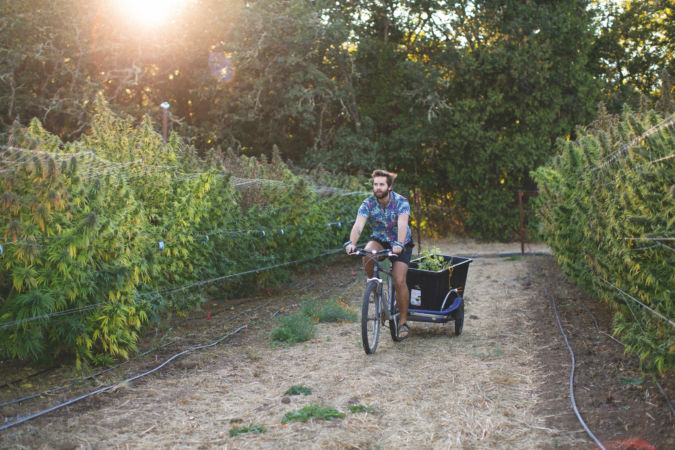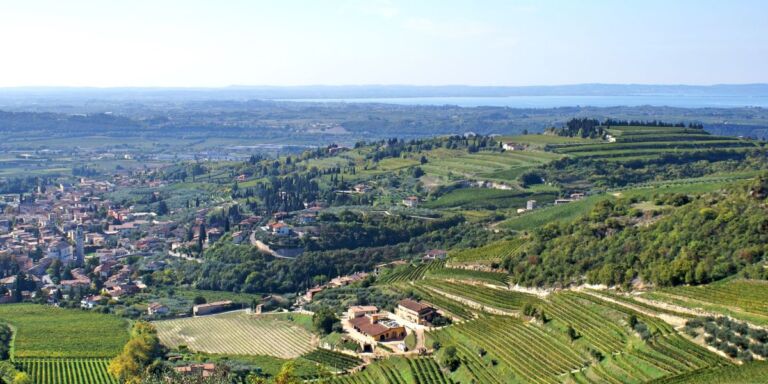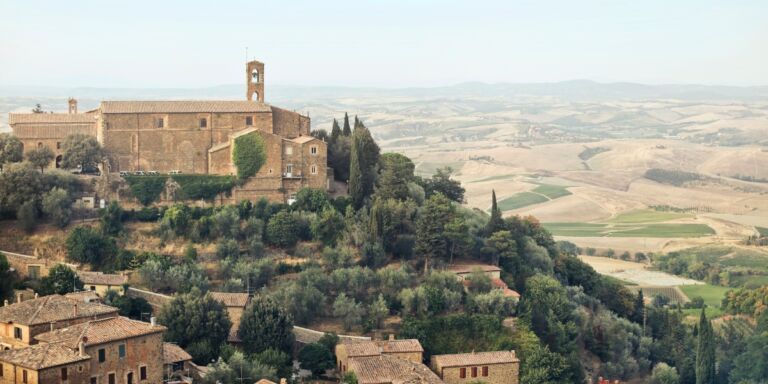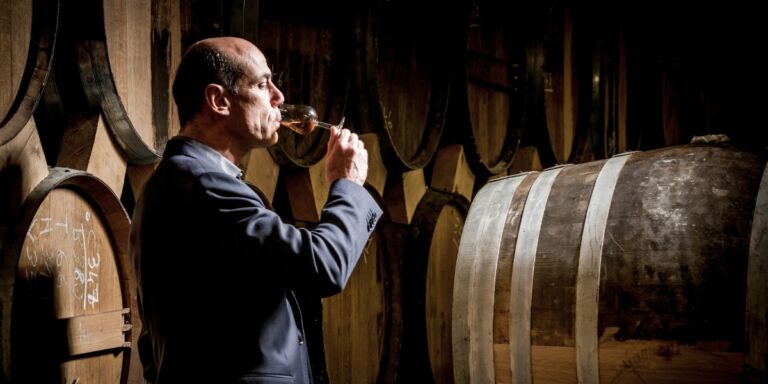Wesley Howard was diagnosed with neurofibromatosis, an incurable genetic disorder, as a baby. When he was nine, doctors detected scoliosis, a spine-deforming symptom of the disease. At 20, Wesley had his first seizure. ‘It was random neurological mayhem,’ recalls his brother, Nathan. ‘A lot of pain, epilepsy, sleep problems.’
Though anti-seizure medications helped, they had negative side effects. Eventually, Nathan and his other brother, Aaron, came to realise that a long-stigmatised plant with which Wesley already had a lifelong relationship, might be a more stable alternative – cannabis. The drug not only gave Wesley relief from the pain, it allowed him to eat and sleep. But this was in 2004, when the only cannabis cultivars Aaron could get his hands on – illegally – were high in a compound known as tetrahydrocannabinol (THC), which is intoxicating. And while he loved the relief and escape afforded by the THC high, Wesley didn’t necessarily want to be intoxicated all the time.

Around 2009, Aaron began hearing about a non-intoxicating compound found in cannabis, cannabidiol (CBD). Known for its anti-seizure and pain-reducing effects, CBD also mitigates the sometimes negative effects of THC, such as anxiety and paranoia. The two are the most important naturally occurring cannabinoids found in plants of the Cannabis genus. And while they have an almost identical chemical structure, a slight difference in the arrangement of atoms is crucial: THC is intoxicating, getting you high; CBD is not, but has proven medicinal properties.
But very few cannabis cultivars that were available in 2009 contained enough CBD to be medically effective. ‘At the time, you couldn’t find people who had CBD in their lexicon,’ says Nathan, whose position was complicated by the fact that he was then chief of staff for Oregon state senator Mark Hass. During the long period when cannabis was illegal in the US, most breeders bred for one main trait: high THC. Nathan likens high-THC strains of cannabis to home-produced moonshine during Prohibition’s ban on alcohol. ‘Their main goal is intoxication,’ he says.
‘Everyone I talked to prior to the 2014 Farm Bill was like, “Weed that doesn’t get you high? One: that doesn’t exist. And two: no one is going to want that.” But the Howard brothers were determined not to listen to the naysayers. Instead, Nathan, 29, and his brother, Aaron, 33, set out to do something different: produce craft cannabis that is high in CBD with lower levels of THC than most consumers have come to expect.
I was told that weed that doesn’t get you high doesn’t exist – and that in any case, no one would want it
Oregon has an increasing reputation for producing some of the best Pinot Noir in the world. But what few wine lovers know is that it is also recognised for producing top-shelf weed. Even before the state legalised recreational cannabis in 2015, breeders and growers flocked to Oregon for its climate (both political and agricultural). In the four years since, these folks have, for the most part, emerged from the shadows of Prohibition. Right now, there are so many recreational cannabis growers in the state – 1,141 at the last count, according to the Oregon Liquor Control Commission – that the market is flooded with high-quality craft cannabis. (Cannabis is still illegal federally in the United States and interstate commerce of cannabis – even from one ‘legal’ state to another – is currently prohibited.) Taking a cue from the wine industry, many of these cannabis growers are practising organic agriculture and marketing their unique cultivars with vivid tasting notes. ‘The familiar rich, vanilla, berry nose, and puffy pistillate development have been carefully nurtured,’ reads a description of Blue Dream from an indoor grower in Portland.
But as more and more ‘cannabis naive’ people explore the plant – whether for the aches and pains of ageing, serious medical conditions, or just for the pleasure of a few hours’ intoxication – it’s clear that less THC and more CBD makes for an easier transition. For those who are accustomed to sipping a glass or two of wine in the evening, nibbling on a half-square of a CBD-dominant chocolate bar could be just the thing.

The laws governing the use of THC and CBD are complicated, and, in the case of THC-containing cannabis, vary from state to state. In the US, hemp – traditionally used to make clothing, rope, textiles and paper –has long been defined as cannabis which contains minimal THC (less than 0.3%). The 2014 Farm Bill gave universities and state agriculture departments the right to grow industrial hemp, but it wasn’t until the 2018 Agricultural Act that it was legal to cultivate hemp in all 50 states. Hemp is legally distinct from cannabis products with over 0.3% THC, which are now legal for recreational use in 11 states, including Oregon, and are licensed for medical use in 33 states.
In Portland, you can wander into any high-end dispensary and sniff cannabis ‘flower’ (cured buds) up close, buy a gram or two, and then smoke it or cook with it. You can find cultivars in every combination of THC and CBD you can imagine. A few shops even describe the terpenes in each strain – the aromatic components present in cannabis, which affect the kind of high you have (and are likely also to have medicinal properties). You’ll find pre-rolled joints, vape pens, and tinctures; you can even find cannabis-infused edibles like artisanal chocolate bars, robot-shaped gummies, and almond butter.
In short, the cannabis industry is exploding: the worldwide market is thought to be worth $14.9 billion this year and is set to break $40 billion by 2024. And since legalisation, the CBD market is also booming. According to the Brightfield Group, a cannabis market and consumer intelligence firm in Chicago, CBD in the US is set to be a $5 billion industry by the end of 2019 and is on track to reach $23.7 billion by 2023.
Today, Nathan and Aaron Howard are part of this scene, having founded East Fork Cultivars in southern Oregon in 2015. The farm has more high-CBD varieties than any other cannabis farm in the state. At this year’s Cultivation Classic, a craft cannabis competition held in Portland each spring, East Fork’s Blue Orchid cultivar won first place in the Sun Type 3 category. The farm’s pre-rolled joints, each imprinted with a llama icon, line the shelves at most Portland dispensaries and you’ll spot its name on everything from chocolates to bath salts. East Fork, quite simply, grows some of the best weed in the state.


Last summer, I decided to take my family on a detour when we were at the Oregon Shakespeare Festival in Ashland. (There was something counterintuitive about hearing my 13-year-old stepdaughter complain
‘I can’t believe you’re making me visit a cannabis farm,’ en route). The 33-acre farm is based in the little-known Illinois River Valley, just four miles from the California border, and to say it’s remote is an understatement. To get there we drove along a dusty gravel road, passing a hippie school, a zipline park and signs for a treehouse hotel. But once you open the farm’s swinging gate, you’re rewarded by its natural beauty – old oak trees, row upon row of vigorous-looking cannabis plants, and in the distance, California’s Siskiyou Mountains.
One of the benefits of locating a cannabis farm in such a spot is the Mediterranean climate. Summer mornings here in the hamlet of Takilma are cool and progress to hot afternoons. More sun means taller, more vigorous plants. ‘A big part of the success of farmers in southern Oregon and northern California is the heat,’ says Nathan. ‘The plants just love the really hot days.’ The summers are also much longer here than in the Willamette Valley up north, meaning farmers can safely harvest cannabis plants well into October. (If you wait that long in Portland, you’re likely to have problems with powdery mildew.)
In this ideal environment, it goes without saying that East Fork’s crops are all sun-grown. (In Portland, most cannabis grows indoors under LED lights.) The Howards and their staff of 16 full-time farmers also grow 12 acres of USDA-certified organic hemp; as cannabis is not yet legal across the US, it cannot be certified organic by the USDA (the US Department of Agriculture). East Fork grows the maximum amount of cannabis that state law allows: just under one acre. They employ cover-cropping – growing vetch, crimson clover and rye, to nourish the soil – and are introducing dill, parsnips and Queen Anne’s Lace to provide a habitat for beneficial insects.

The Howards wanted to bring back the genetic diversity of cannabis that nearly became extinct during prohibition of the plant – cultivars that might deliver therapeutic benefits without the severe high of 95% of the varieties available at the time. They bought their property in southern Oregon’s Illinois River Valley, and searched up and down the west coast for high-CBD cultivars like ACDC, Oracle, Canna Tsu, Cannatonic and OG78. Thanks to the generosity of legendary breeders in Humboldt county, California, such as Lawrence Ringo and Kevin Jodrey – both of whom pioneered CBD genetics – as well as friends and growers in Southern Oregon, they were able to patch together their initial genetic library. East Fork Cultivars was born. Its first crop was in 2016, a year after Oregon’s Measure 91 legalised adult recreational use of cannabis throughout the state.
In a few short years, East Fork has become the leading producer of CBD-dominant cultivars in Oregon. It now has a director of education, Anna Symonds, who leads science-packed CBD classes across the state for budtenders (staff at dispensaries where cannabis is sold) and other members of the industry. East Fork even launched its own branded products: CBD drops, which can be added to any beverage to help you mellow out.
Now, thanks to the passage of the 2018 Agricultural Improvement Act, even people who live outside the state can purchase products containing the farm’s organic, CBD-rich hemp. Oregon-based Empower BodyCare’s CBD-only bath salts are powered by East Fork (and are sold all over the US); Grön Chocolates uses East Fork’s hemp for its artisanal dark chocolates (which are available across the US, and in the UK and Japan); and Laurie + MaryJane relies on it for their CBD-infused granola and CBD-infused coconut oil. All of which puts East Fork Cultivars at the forefront of one of the most extraordinary booms since the repeal of the National Prohibition Act in 1933.
* * *
Towards the end of his life, Wesley Howard was able to find relief with ACDC and other CBD-dominant cultivars grown by his brother, Aaron. ACDC, which can have as much as 17% CBD and less than 0.3% of THC, has incredible therapeutic qualities. ‘More people swear by that plant for providing consistent relief than any other CBD-dominant plant I’m aware of,’ says Nathan.
When Wesley died in 2017, aged 33, his death only strengthened his younger brothers’ mission to grow the best CBD-dominant cultivars and supply them to the thousands of Oregonians who are in need of such medicine. With hemp now legal for medical use across the country, the pair are in position to further extend its reach – and Wesley’s legacy.

Tasting notes
Long-time cannabis users sometimes still trot out the old indica/sativa paradigm to describe the difference between cultivars. Supposedly, indica described the strains that would induce sleepiness or ‘couch-lock’, whereas sativa would cover the heady, uplifting strains. But this classification is considered too simplistic. According to long-time cannabis grower/breeder and activist Jeremy Plumb, most well-informed growers today categorise cannabis into three groups based on their chemical profile. Type I is high in THC and has almost no CBD; Type II is high in both CBD and THC; and Type III is very high in CBD with less than 1% THC. East Fork specialises in Type II and Type III.
Wesley’s Wish, Type II
This is East Fork’s signature strain, named after the late Wesley Howard.
Bred from Purple Hindu Kush and Pineapple Tsu, it smells like cherry cough syrup served in an overripe orange. Its low levels of THC (4.11%) and high levels of CBD (12.4%) mean that it’s only mildly intoxicating, making it the perfect cultivar for those who are new to cannabis.
Blue Shark, Type II
Blue Shark has a distinct floral nose and a buzzy effect. The chemical profile is almost a 2:1 ratio of CBD to THC – 10.9% CBD and 5.93% THC.
Oregon Guava, Type III
Oregon Guava is a CBD-dominant plant (with no detectable levels of THC) that is the progeny of ACDC and Sour Tsunami. It carries notes of tropical fruit, including guava, for a relaxing and mellow experience. The chemical profile is 20.7% CBD and 0.78% THC.




